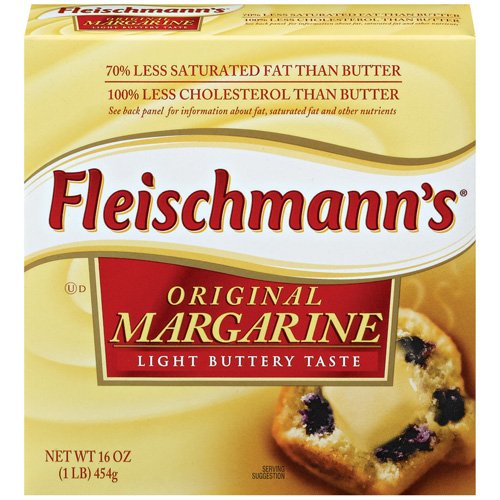Omega-6
Omega-6 is another type essential PUFAs perform varies protective functions in human body. It also plays a crucial role in brain function and development. Adequate omega-6 intake helps to maintain healthy status of organs and body functions.
Although omega-6 is beneficial, excessive intake of omega-6 may raise the risk of numeric chronic diseases. As omega-3 and omega-6 compete in some reaction pathways in the human body, excessive intake of omega-6 causes high omega-6 to omega-3 ratio will result in lower omega-3 utilization, thus can contribute to inflammation and result in heart disease, cancer, asthma, arthritis, and depression. The ideal omega-6/ omega3 intake ratio should be in the range of 1:1 to 2:1. However in American/western diet, this ratio is higher than 20:1, which means most people in America are taking omega-6 much more than necessary.
Omega-6 to omega-3 ratio is related to reproductive health
Besides the diseases mentioned above, imbalanced omega-6 to omega-3 intake may relate to infertility. One study found the ratio of serum omega-6/omega-3 was significantly higher in infertile male (14.3) compare to healthy controls (6.3). Researchers studied women undergoing assisted reproduction. This 2018 published study found that serum ratio of ω6 to ω3- PUFA was inversely associated with peak estradiol levels, which stands for ovarian response to stimulation. It suggests lower omega-6 to omega-3 ratio is preferred for healthier ovation.
Omega-6 promotes human reproductive health when omega-6 and omega-3 ratio is balanced at a healthy level. In a 2016 published study, increased preconception Omega-6/ Linoleic acid intake with a trend for an elevated intake of omega-3 positively affected pregnancy rate of overweight /obese women undertaking in vitro fertilization. The omega-6 to omega-3 ratios in this study remains constantly about 6 before and after increasing omega-6 intake.
Balance omega-6 to omega-3 dietary intake
Balanced omega-6 and omega-3 intake in our diet is important for maintaining optimal health. Major omega-6 source in our diet is cooking oils. If you dine out or eat processed food frequently, then your omega-6 intake is most likely higher than healthy level.
Reduce the intake of cooking oil, such as sunflower oil, soybean oil, and nuts, such as walnut, almond, pistachio, which are cooking oils and nuts containing most Omega-6 according to USDA National Nutrient Database for Standard Reference Release 28.
Again, fish is the ideal omega-3 source with low omega-6 level.
Saturated Fats
Saturated fatty acids are one type of major energy sources in the American diet. All carbons are saturated with single bonds in their chemical structure. They are neutral for human health. Saturated fats themselves are neither as harmful as trans fats nor as protective as unsaturated fats.
Saturated fats were believed to cause heart disease and other health issues, but recent studies( 1, 2, 3) revealed that there is no direct link between undifferentiated saturated fatty acid intake with mortality caused by heart disease, cancer, diabetes, and infertility.
However, Palmitic acid, which is a saturated fatty acid commonly found in both animals and plants, was directly associated with mortality in a most recent cardiovascular health study. Palmitic acid was also found increase the risk of obesity and insulin resistance, both are the factors related to women infertility. According to USDA Food Composition Database, palm oil, and palm shortenings contain a large amount of palmitic acid (from 36.5% to 42.5%). It is recommended to avoid palm products added food to avoid excess palmitic acid intake.

Replace saturated fats intake with unsaturated
USDA dietary guidelines 2015-2020 suggest limiting saturated fats intake and consuming less than 10 percent of calories per day from saturated fats.
People can only consume a limited amount of food; hence higher saturated fatty acids intake may result in lower unsaturated acids intake. Deficiency of unsaturated fatty acids may lead to varieties of health issues, including infertility. While, increasing the intake of unsaturated fatty acids can bring lots of health benefits, such as support brain functions and neurodevelopment, boost the immune system, reduce the risk of heart disease and cancer, and promote reproductive health.
A Study of dietary fats and male fertility have proven Diets containing higher amounts of PUFAs and lower amounts of saturated fats were associated with more favorable semen quality parameters.
With the fact that unsaturated fatty acids are more beneficial, we recommend reduce saturated-fats intake and replace it with unsaturated-fats from both plant and animal food sources. According to USDA Food Composition Database, fat contents are mostly saturated fats in the following meats and oils.
- beef products
- dairy products (including cheese and whole milk)
- lamb products
- pork
- veal
- nutmeg oil
- babassu oil
- soy oil
- palm oil
- shortening
- coconut oil
Trans-fats
Trans fatty acids are uncommon in nature but commonly produced industrially. They are made by exposing polyunsaturated vegetable oils to a chemical process that involves high heat, hydrogen gas and a metal catalyst. Industrial trans fats often exist in partially hydrogenated vegetable oils, margarine, and fried food and are added to packaged prepared foods to increase shelf life and reduce costs. Only small amounts of trans fats occur naturally in food.
In the recent decades, trans-fats have been put in the spotlight for its harmful effects on human health. Lots of researches have been carried out to explore this topic. Studies widely confirmed that trans-fat intake increases the risk of some chronic diseases such as cardiovascular disease and type 2 diabetes and also associates with pro-inflammatory states in the human body.
Trans fats negatively associate with human reproductive health
Human reproductive health largely relies on fats. Appropriate fat supply (balanced healthy fats) could boost both female and male fertility. On the opposite, bad fats (e.g. trans fats) could result in reproductive system disorder.
Female fertility issues have been linked to trans-fats intake. Scientific studies have found consuming more trans-fats is associated with higher rate of fetal loss, failure of implantation and ovulatory dysfunction. A 2018 published paper further confirmed trans fats intake decrease women pregnancy rates, and omega-3 unsaturated fats intake results higher fecundity.
Besides female reproductive health, male fertility is also associated with trans fats intake. Studies showed more trans fats intake results lower sperm counts and lower fertilization rates.
Limiting trans-fats intake
The dietary guidelines for Americans 2015-2020 suggest to limit trans-fat intake, but there is not a limit value. Currently, no known requirement of trans-fat for body functions is discovered. Therefore, we recommend doing your best to avoid trans-fat consumption.
Reading food labels
Reading food labels could help eliminate most trans-fat from our diet. Trans fats are listed in bold print on food labels.
Since trans fats are now visible on packaging labels, manufacturers are trying their best to remove trans fats from their ingredients. Most of the foods sold in grocery stores with nutrition labels are containing 0 trans fats. Keep in mind, though, a product contains up to 0.5-gram trans-fat can claim to have 0 (according to FDA).
Ingredients list could provide more information about hidden trans-fat. According to USDA Food Composition Databases, oils and solid fats containing most added industrial trans fats including
- shortenings
- Margarine
- industrial partially hydrogenated oils ( “partially” may be removed to hide trans fats)
- vegetable oil spreads
- cream substitute



When above ingredients appear in the list, it is better to look for an alternative, especially if it’s something you eat regularly.
Bakery and restaurant foods are major hidden sources of trans fats in the modern diet, as foods sold in these places are not required to have a nutrition label. Limiting dining out and bakery without a nutrition label are recommended to minimize trans fat intake.
